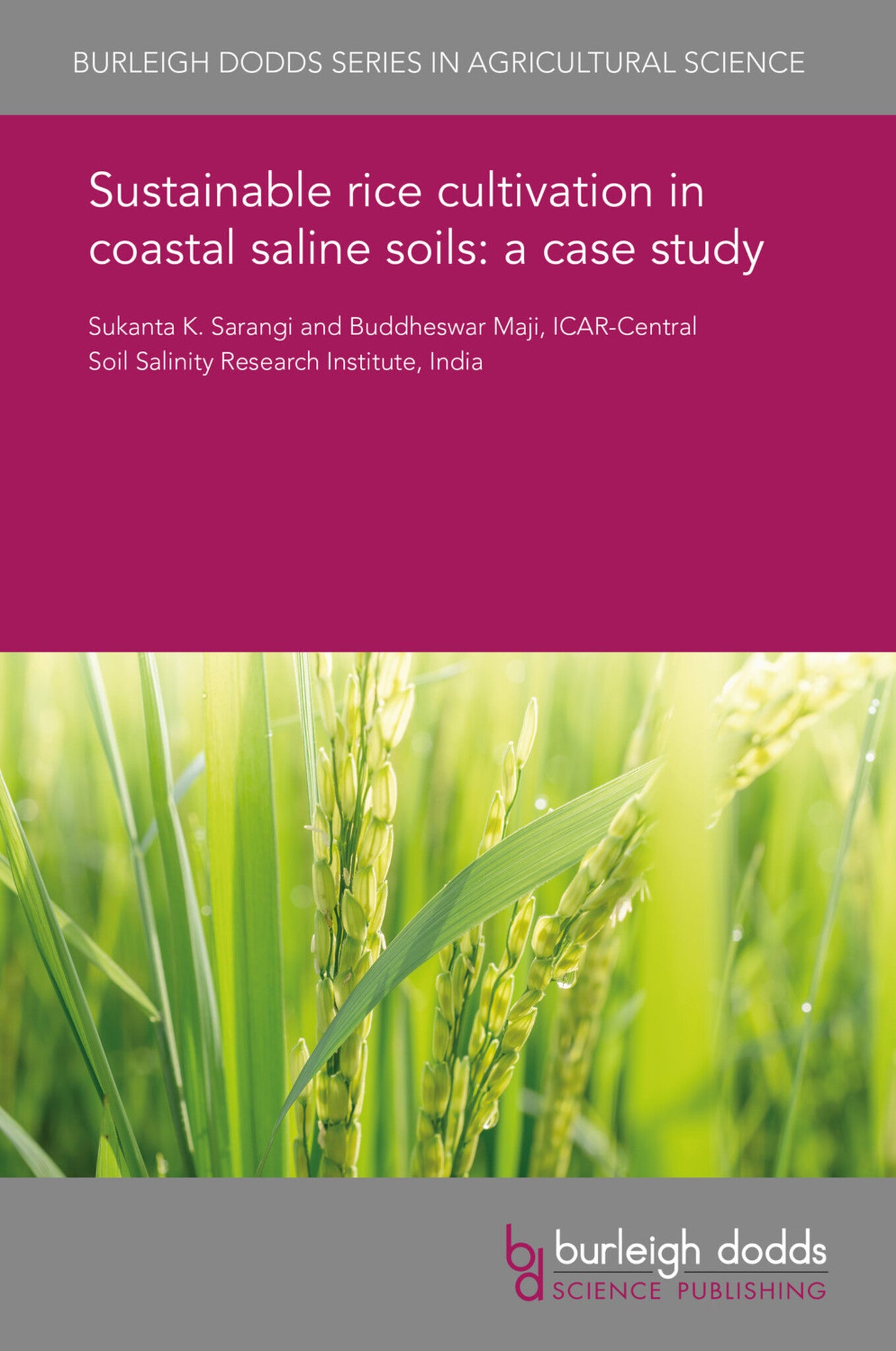We're sorry. An error has occurred
Please cancel or retry.
Sustainable rice cultivation in coastal saline soils: a case study

Some error occured while loading the Quick View. Please close the Quick View and try reloading the page.
Couldn't load pickup availability
- Format:
-
31 May 2017


TECHNOLOGY & ENGINEERING / Agriculture / Sustainable Agriculture, Agronomy and crop production, TECHNOLOGY & ENGINEERING / Agriculture / Agronomy / Crop Science, Botany and plant sciences, Sustainable agriculture

1 Introduction 2 The Sundarbans region of India 3 Management of coastal acid saline soils 4 Salt- and flood-tolerant rice varieties for coastal saline soils 5 Nursery management for wet season rice 6 Rice field management after transplanting 7 Management practices for dry season rice 8 Managing toxic gases from coastal rice fields 9 Removing excess soluble salts from the root zone 10 Integrated nutrient management (INM) for coastal saline soils 11 Reducing salinity build-up through mulching/cover crops 12 Management practices for increasing income from rainfed lowlands 13 Contingency plan for cyclone affected area 14 Recommended practices for cultivation of kharif and rabi rice 15 Alternative livelihood options 16 Future trends and conclusion 17 Where to look for further information 18 References



